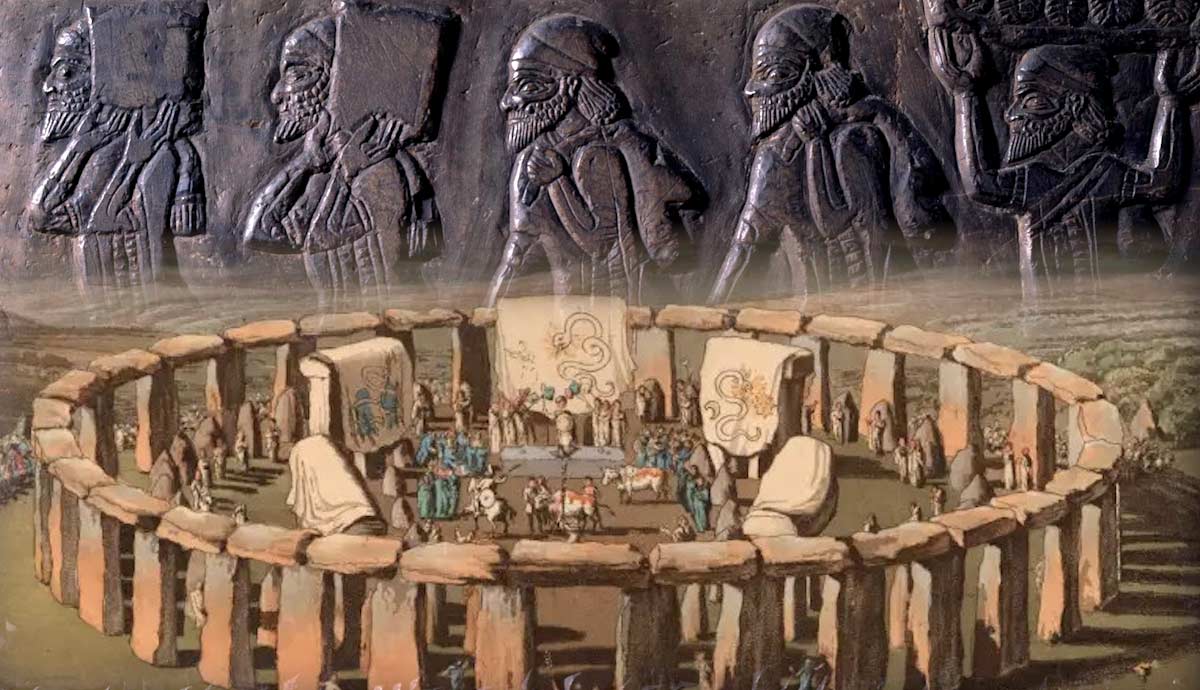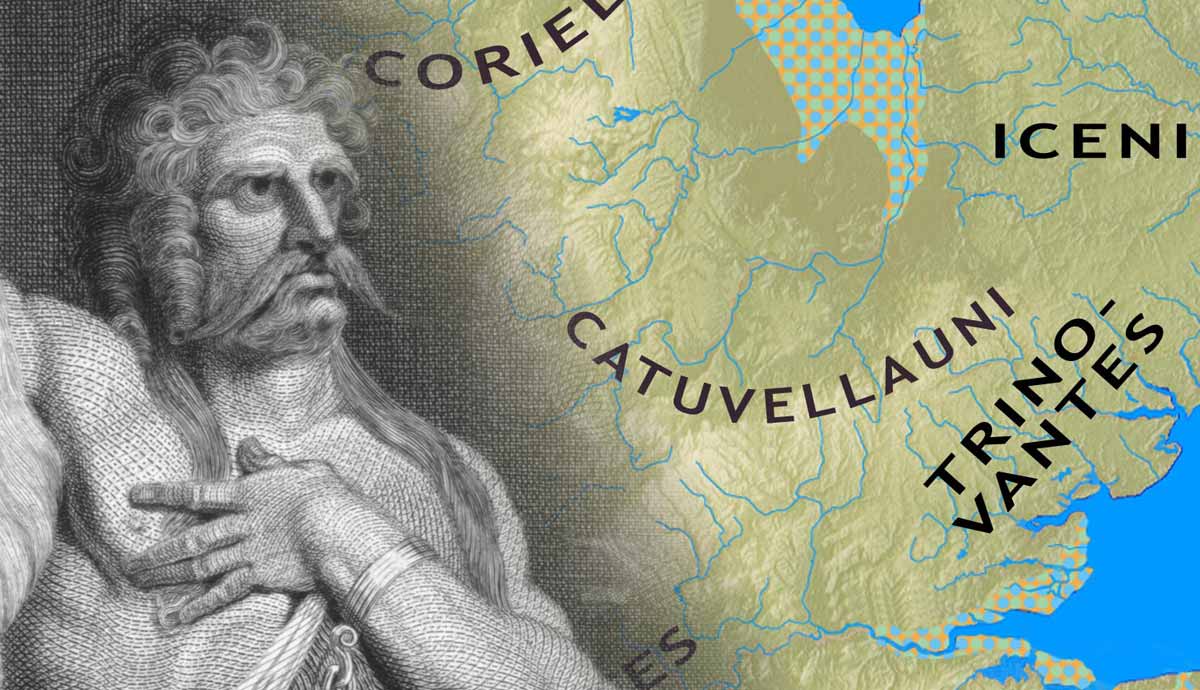
The subject of the Ten Lost Tribes of Israel has fascinated Biblical researchers for centuries, if not longer. One theory which started becoming popular in the sixteenth century is that some, if not all, of these Ten Tribes migrated to ancient Britain.
The theory is much less popular today than it once was. However, it has experienced something of a resurgence in recent decades. This article will examine what this theory is, what the proposed evidence is, and why it does not stand up to scrutiny.
The Israelites and the Britons: The Deportation of the Ten Tribes of Israel

According to the Biblical record, in the tenth century BCE the Kingdom of Israel split into two kingdoms. The southern kingdom was known as the Kingdom of Judah, while the northern kingdom continued to be known as the Kingdom of Israel. The capital of the southern kingdom was Jerusalem, while that of the northern kingdom was Samaria for most of its history.
In the eighth century BCE, the Assyrians began fiercely attacking Israel and Judah. King Shalmaneser V and his successor Sargon II defeated Samaria and deported many thousands of Israelites. Deportation of defeated nations was the standard practice of the Assyrian Empire. Over the course of several decades after this, the Assyrians engaged in a few more campaigns against Israel, deporting even more of the population. The Biblical record explains that the Israelites were scattered to numerous locations around the empire. Assyrian records do not specify, but the Bible relates that many of them were sent to cities in eastern Anatolia. This location is important for the theory.
The Connection to the Cimmerians

By the end of the eighth century BCE, vast numbers of Israelites had been scattered across the Assyrian Empire, particularly to eastern Anatolia. At about the same time, a nation closely connected to the Scythians called the Cimmerians appears in the historical record. Later Greek records explain that they swept across Anatolia from the east. They brought about the downfall of the mighty Phrygian kingdom at the height of its power and for a number of decades, they established a powerful base in central Anatolia. In about 652 BCE, they conquered the capital of the Lydian empire, Sardis. However, a few decades later they were pushed out of Lydia by King Alyattes.
According to proponents of the theory connecting the Israelites to the Britons, the Cimmerians can be identified as the deported Israelites. There are two main pieces of evidence for this. The first is that they appear in the historical record in the same place that large numbers of Israelites were deported to, and at the same time. The second piece of evidence is that the Israelites were supposedly known in Assyrian records as the “Khumri” which is remarkably similar to “Kimmeroi” the Greek name for the Cimmerians.
The Migration to Britain

The issue of how the Cimmerians got from Anatolia to Britain is something which varies depending on the researcher promoting the theory. But according to Wilson and Blackett, those responsible for the theory’s recent resurgence, the explanation lies in British legend. According to medieval British records, the Britons were descendants of the Trojans. After the Trojan War, prince Aeneas led his people to Italy (as per Virgil’s Aeneid). After staying there for a few generations, a descendant of Aeneas named Brutus led some Trojan descendants on a migration to Britain.
Wilson and Blackett argue that the Trojan War happened, not in c. 1200 BCE, but in 650 BCE. Thus, the Cimmerians were in Anatolia when it happened. But not only were they simply there — they actually merged with the Trojans. Therefore, the Trojan migration to Britain was also a Cimmerian migration. Since the Cimmerians can be identified with the Israelites, this means that the Britons can be identified as Israelites.
The Name of the Israelites

For the Britons to really be identifiable as Israelites, three things need to hold up to scrutiny. Firstly, the connection between the Israelites and the Cimmerians. Secondly, the connection between the Cimmerians and the Trojans. And finally, the Trojan migration to Britain. For the sake of this article, it is sufficient to just examine the first two connections.
Promoters of this theory claim that the Israelites are known as the “Khumri” in the Assyrian records. But this is not the case. They are known as the “Bit Khumri”. This is a very important distinction. The word “Bit” means “House”, while “Khumri” is a form of the name “Omri”, a powerful Israelite king from before the time these records were made. So the Assyrians referred to the Israelite dynasty as the “House of Omri”, because Omri was an important founding figure. This is equivalent to the expression “House of David”, used in reference to the southern dynasty. The Assyrians evidently referred to the Israelites by this term because Omri was a powerful king who left an impression on them.

In contrast, there is no evidence that the Greeks had ever heard of King Omri. There are no Greek records referring to him. So why would the Greeks have referred to the Israelites by a term that came from his name? They cannot have got it from the Israelites, because we know that the Israelites did not use that name in reference to themselves. In the Biblical record, we find them referred to by expressions such as “Israel”, “Manasseh”, “Ephraim”, “Joseph”, and “Samaria”, but never as the “House of Omri”.
Are we to believe that the Greeks got their name for the Israelites from the Assyrians instead? There is no logical reason why that would have happened. In fact, we know that the Greeks did not call the Israelites the “Kimmeroi”, because there are legitimate ancient Greek references to the Israelites in the Levant. The fact that the Greeks called the Israelites one thing and the Cimmerians something else shows that they considered them to be two distinct people. The supposed connection between the “Khumri” and the “Kimmeroi” thus holds no water.
Assyrian References to the Cimmerians

Something which is never mentioned by proponents of this theory is the fact that the Cimmerians themselves also appear, separately to the Israelites, in Assyrian records. They are called the “Gimirri” or “Gimirrai”. Their activities as described in Assyrian records match the movements of the Cimmerians described in Greek records, confirming that they are the same people. What does this mean for the theory? Well, it severely undermines the idea that the “Kimmeroi” from Greek records can be connected to the “Khumri” of Assyrian records. It proves instead that the “Kimmeroi” are the “Gimirri” of those records, and that the “Khumri” were a separate people entirely.
It cannot be argued that “Gimirri” is simply an alternative spelling of “Khumri”. The two nations appear numerous times in Assyrian records, with little if any variations in spelling. If they were just the same name spelled differently, we would expect to see a spectrum of different spellings between “Gimirri” and “Khumri”, but we do not see that. In addition, we would expect to see “Bit Gimirri”, but again, we do not see that. Instead, we have “Bit Khumry” and “Gimirri”, consistently separate.
Israelite Beliefs about the Cimmerians

Yet another reason why the identification of the Cimmerians with the Israelites does not work is because of what the Israelites themselves believed. In the Table of Nations, found in Chapter Ten of Genesis, there is a figure named Gomer. He is the son of Japheth, one of Noah’s three sons. It is widely understood that this Gomer is meant to be the forefather of the Cimmerians. This is supported by an analysis of the names of Gomer’s own sons presented in that chapter. One of them is “Ashkenaz”, which has been convincingly linked to the ancient spelling of the name of the Scythians. The Scythians were very closely connected to the Cimmerians. That Gomer was the forefather of the Cimmerians was also the conclusion of Josephus, the Jewish historian.
In contrast, the Israelites considered themselves to be sons of Shem, one of Noah’s other sons. This is strong evidence that the Israelites themselves did not consider the Cimmerians to be identical to them. In fact, they did not view them even as close relatives.
Issues with the Cimmerians Being Trojans

Finally, we come to the connection between the Cimmerians and the Trojans, the supposed explanation for how the Cimmerians became the Britons. This is a peculiarity of Wilson and Blackett’s version of this theory, but it is worth analyzing because their theory is now a relatively popular one. There is a fundamental issue with the idea that the Cimmerians could have merged with the Trojans after the Trojan War. This is the case even if we grant that the war could have had occurred as late as 650 BCE. The issue is that the Cimmerians would have unquestionably been enemies of the Trojans.
According to Homer’s Iliad and other records, the Trojans were allied with the Phrygians and the Lydians, along with various other nations of western Anatolia. Yet those were the exact nations that the Cimmerians were waging war against. Recall that the Cimmerians were responsible for bringing the downfall of the Phrygians, and almost did the same to Lydia. The suggestion that the Cimmerians merged with the Trojans after being expelled by King Alyattes is entirely arbitrary. It is designed to provide an explanation for the Cimmerians migrating to the British Isles and becoming the Britons. But in terms of the actual historical facts, it runs completely counter to what we would expect.
Were the Britons Descendants of the Israelites?

In conclusion, the theory that the Israelites became the Britons is a theory that is built out of several false identifications. Primarily, there is the identification of the Israelites with the Cimmerians. This is based on the equation of the name “Khumri” with “Kimmeroi”. However, such an equation is impossible for a variety of reasons. One key reason is that there is no logical reason why the Greeks would have come to use the Assyrian term for the Israelites. And crucially, the Assyrians themselves made a clear distinction between the Israelites and the Cimmerians. The Israelites also identified the Cimmerians as being a completely separate nation.
Furthermore, the identification of the Cimmerians with the Britons relies on the idea that the former merged with the Trojans after the Trojan War. But the Cimmerians warred against the allies of the Trojans, so there is no reason at all why the Trojans would merge with them. So on both counts, the supposed evidence for this theory does not stand up to scrutiny. In reality, there is no evidence that the Britons came from the Israelites.










